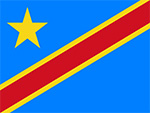Freshwater Challenge
World Wildlife Fund (WWF)
(
Non-governmental organization (NGO)
)
#SDGAction51667
Description
The Freshwater Challenge is a multi-stakeholder partnership to integrate freshwater restoration in national action programs, relevant policies and planning frameworks across sectors and channel support at country and basin-level with the aim of bringing life and ecosystem services back to our rivers and inland wetlands and of supporting sustained prosperity for people and nature.
Objectives
- To fulfill the vision, the partnership will pursue three objectives:
- Set freshwater restoration targets and mainstream these ambitions in national policy agendas to promote policy coherence across sectors and accelerate the national-level achievement of the Sustainable Development Goals, the Kunming-Montreal Global Biodiversity Framework, the Paris Agreement, and other multilateral frameworks.
- Collect commitments, initiatives, and actions from all the stakeholders engaged in freshwater restoration to account for their contributions and to improve planning, measuring progress and harmonizing reporting.
Mobilize resources to accelerate implementation and support members and partners to achieve their restoration targets.
Rationale
The important role of healthy freshwater ecosystems has been recognized in key international development frameworks, including the Sustainable Development Goals (SDGs), Convention on Biological Diversity (CBD), UN Framework Convention on Climate Change (UNFCCC), UN Convention to Combat Desertification (UNCCD), Ramsar Convention on Wetlands and Sendai Framework for Disaster Risk Reduction. However, responsibilities and competencies remain highly fragmented among different organizations, programs, and funds. UN–Water was created to offer a platform for discussion and coordination among different actors engaged in global water governance, but it did not manage to influence policy frameworks nor connect them with knowledge generation.
At the national level, coordination among the different actors is often difficult. Several countries still face internal siloed approaches to water management as well as challenges to mainstream the topic into national sustainable development strategies and other climate and environmental related plans. To make matters more complicated, the issue of complementarity versus duplication of national targets/commitments made under different processes remains unsolved.
Purpose
The Freshwater Challenge is a country-driven initiative that aims at leveraging the support needed to bring 300,000 km of rivers and 350 million hectares of wetlands under restoration by 2030. These figures equal 30 percent of degraded freshwater ecosystems. Based on nationally-identified priorities, the Challenge will take an inclusive and collaborative approach to implementation where governments and their partners will mobilize resources and expertise to support the definition and implementation of freshwater restoration targets and co-create solutions with indigenous people, local communities and other national and international stakeholders.
Launching at the UN Water Conference, the Action Plan defines three interrelated pillars to support the implementation of national priorities and targets by addressing long-standing gaps in freshwater ecosystem restoration, protection and sustainable management, which underpin the effective delivery of sustainable development, biodiversity, climate, and disaster risk reduction plans:
Pillar 1: Knowledge – Quantify and Prepare;
Pillar 2: Plans and Strategies – Identify and Mainstream; and
Pillar 3: Resources – Mobilize Finance.
IUCN
Wetlands International
UNEP - Decade for Ecosystem Restoration
Ramsar Convention
TNC
AB In-Bev
SDGS & Targets
Goal 6
Ensure availability and sustainable management of water and sanitation for all
6.1
By 2030, achieve universal and equitable access to safe and affordable drinking water for all
6.1.1
Proportion of population using safely managed drinking water services
6.2
By 2030, achieve access to adequate and equitable sanitation and hygiene for all and end open defecation, paying special attention to the needs of women and girls and those in vulnerable situations
6.2.1
Proportion of population using (a) safely managed sanitation services and (b) a hand-washing facility with soap and water
6.3
By 2030, improve water quality by reducing pollution, eliminating dumping and minimizing release of hazardous chemicals and materials, halving the proportion of untreated wastewater and substantially increasing recycling and safe reuse globally
6.3.1
Proportion of domestic and industrial wastewater flows safely treated
6.3.2
Proportion of bodies of water with good ambient water quality
6.4
6.4.1
Change in water-use efficiency over time
6.4.2
Level of water stress: freshwater withdrawal as a proportion of available freshwater resources
6.5
By 2030, implement integrated water resources management at all levels, including through transboundary cooperation as appropriate
6.5.1
Degree of integrated water resources management
6.5.2
Proportion of transboundary basin area with an operational arrangement for water cooperation
6.6
6.6.1
Change in the extent of water-related ecosystems over time
6.a
6.a.1
Amount of water- and sanitation-related official development assistance that is part of a government-coordinated spending plan
6.b
Support and strengthen the participation of local communities in improving water and sanitation management
6.b.1
Proportion of local administrative units with established and operational policies and procedures for participation of local communities in water and sanitation management
SDG 14 targets covered
| Name | Description |
|---|
Deliverables & Timeline
Resources mobilized
Partnership Progress
Feedback
Action Network

Timeline
Entity
SDGs
Region
- Africa
- Europe
- Asia and Pacific
- Latin America and the Caribbean
- Global
Other beneficiaries
Freshwater Ecosystems
Future generations
Website/More information
Countries






Contact Information
Christine , Ms

